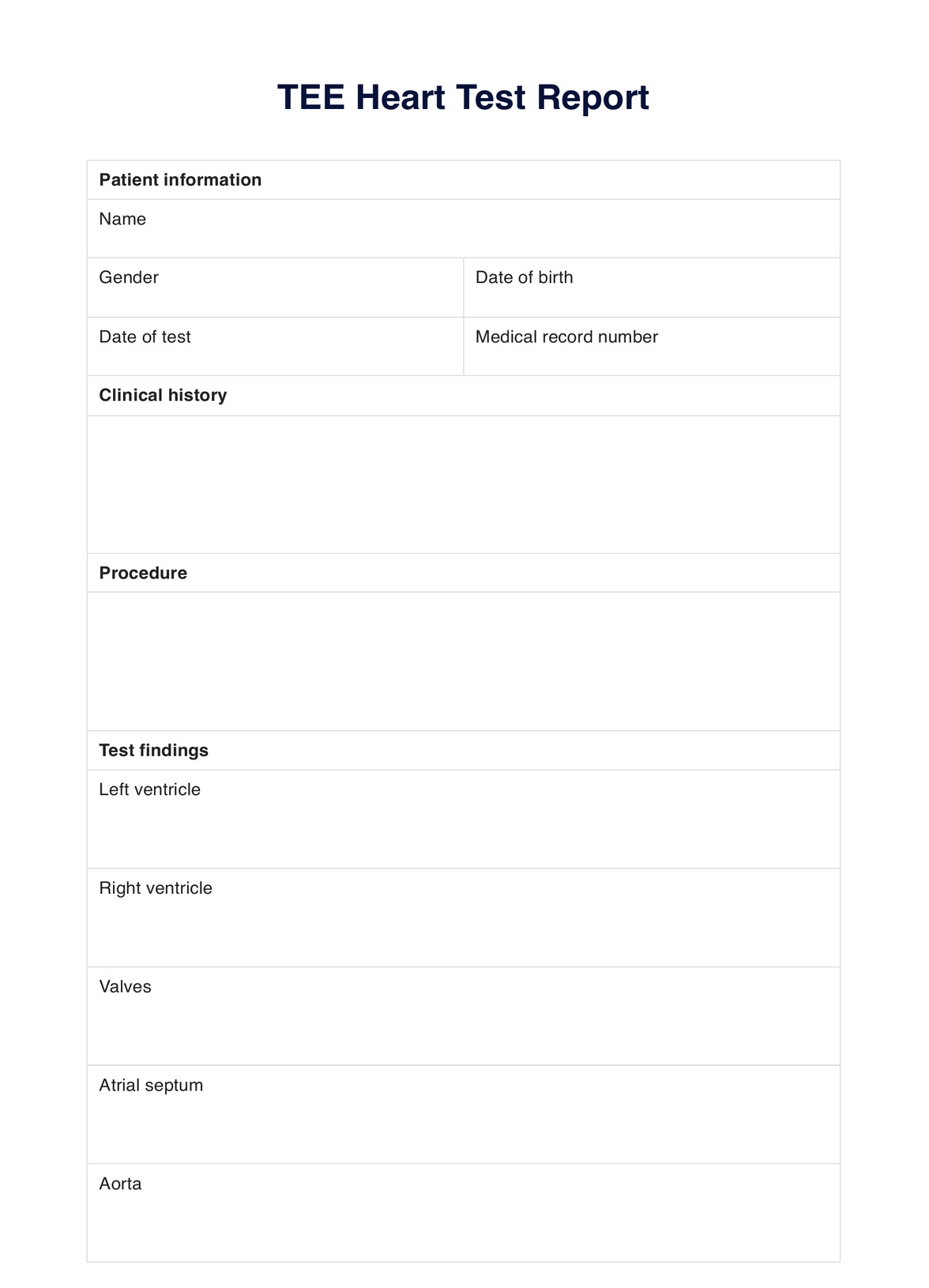Healthcare providers may request a TEE Heart Test for patients experiencing chest pain, shortness of breath, or palpitations. It may also be ordered as a follow-up to other diagnostic tests or procedures.

TEE Heart
Learn how to efficiently document a TEE Heart Test result with our free report template. Download the PDF and example here.
TEE Heart Template
Commonly asked questions
TEE Heart Tests diagnose and monitor various heart conditions, including heart valve problems, blood clots, tumors, and aneurysms. They may also be utilized before or during surgeries involving the heart.
Most patients do not experience any pain during a TEE Heart Test. Mild discomfort or pressure may be felt when the probe is inserted, but sedation is typically administered to help patients relax during the procedure. Patients may feel a sore throat after the test due to the probe passing through the esophagus.
EHR and practice management software
Get started for free
*No credit card required
Free
$0/usd
Unlimited clients
Telehealth
1GB of storage
Client portal text
Automated billing and online payments











